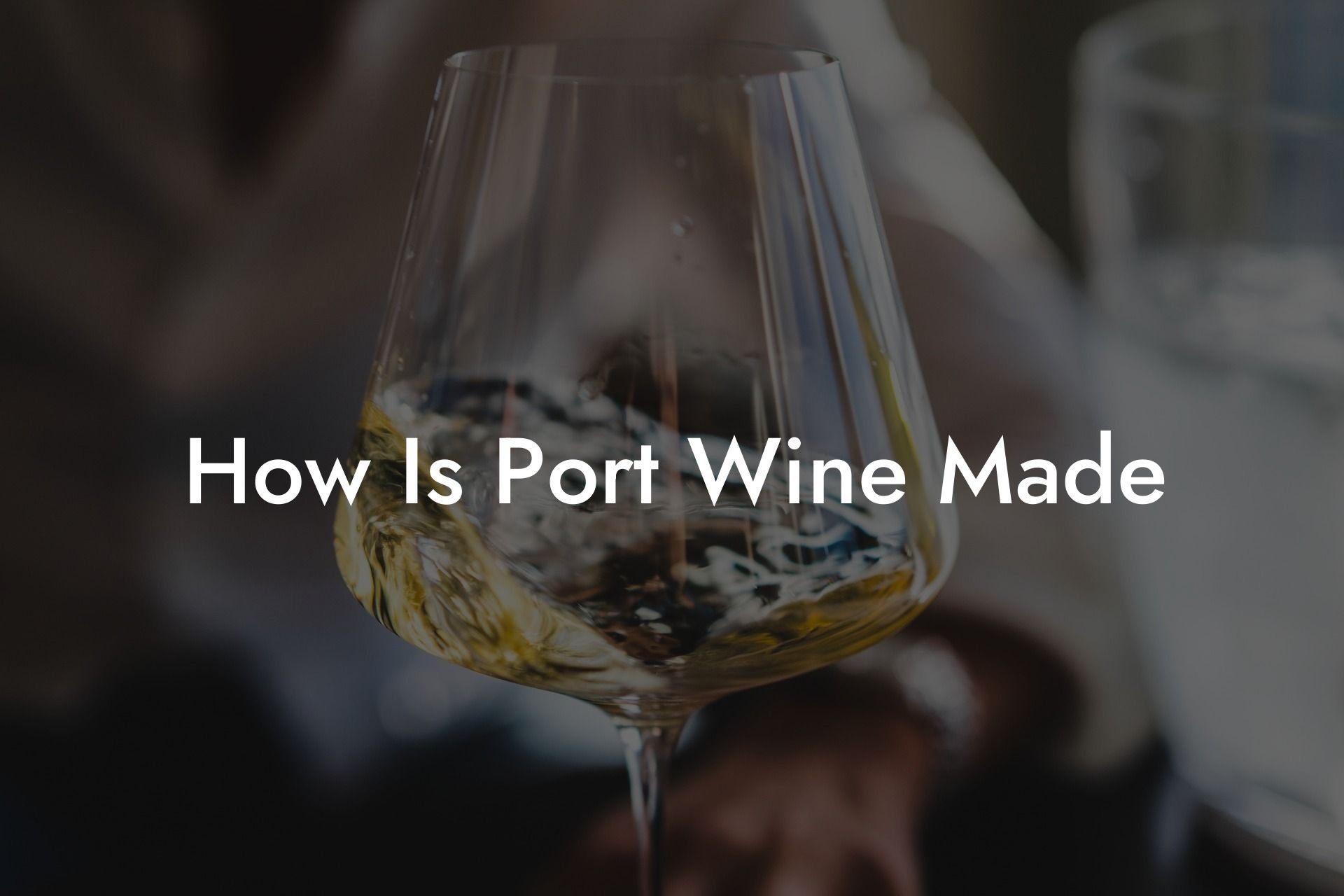Ever wondered how the silky-smooth, rich, and sweet taste of port wine comes to be? You're in luck! We're pulling back the curtain and diving into the fascinating world of port wine production. With a history as captivating as its flavors, there's much you'll want to learn about this fortified wine.
Origins and Grapes
Originating from the Douro Valley in Portugal, port wine is a distinctive fortified wine with a signature sweetness. Fortified wines are created through the addition of a distilled spirit, typically brandy, during the winemaking process – a technique that originated as a means of preserving wine for longer periods.
Port wine is typically made from indigenous Portuguese grape varieties, some of which include:
Do You Want to Win a Free Bottle of Wine?
Don't miss out on the opportunity to win a free bottle of wine every week.
Enter our weekly prize draw today!
- Touriga Nacional, for its tannins, structure, and dark fruit flavors
- Touriga Franca, for its floral notes, red fruit flavors, and smooth texture
- Tinta Roriz (known as Tempranillo in Spain) for its roundness, deep color, and fruit flavors
- Tinta Cão, for its high acidity and blackcurrant flavors
The Winemaking Process
Each step of port wine production plays a crucial role in the development of the final product's flavors, color, and mouthfeel. Here's how port wine is made:
1. Harvest and Crushing
The grapes are typically hand-harvested, ensuring only the best quality fruit is used. After harvesting, the grapes are transported to a winery where they undergo the crucial process of crushing. Traditionally, this was done by foot (and sometimes still is!), but modern wineries often utilize automatic crushers to expedite the process.
2. Fermentation
After crushing, the grape must (juice, skins, and seeds) is left to ferment in containers for a brief period, typically 24 to 48 hours. During this time, the yeast consumes the sugar in the grape juice and converts it into alcohol. In most winemaking processes, fermentation continues until most of the sugar is converted. However, for port wine, fermentation is shortened to retain its signature sweetness.
3. Fortification
The defining feature of port wines is the fortification process. Before fermentation is complete, a neutral distilled spirit, known as aguardente (similar to brandy), is added to cease the yeast's activity and raise the wine's alcohol content. This 'fortification' leaves the wine with a higher concentration of residual sugar, leading to its well-known sweet taste.
4. Aging
Port wine can be aged in a variety of ways, resulting in different styles and flavors. Some common aging methods include:
- Wood Aging: Typically done in oak casks or barrels, this method imparts flavors of vanilla and spice while allowing oxygen to age the wine gradually and develop complex flavors.
- Bottle Aging: Some ports are aged in bottles, which limits the wine's exposure to oxygen, preserving its vibrant fruit flavors and dark color.
- Blend Aging: Many ports are aged in a combination of wood and bottle methods, creating a mix of wood-aged and fruit-driven flavors.
How Is Port Wine Made Example:
Visit any winery in the Douro Valley, and you'll find an abundance of port wine styles waiting to be discovered! For example, you might encounter:
- Ruby Port: A young, fruit-forward style of port aged for a short period in wooden vats or steel tanks. It showcases bright, fresh fruit flavors and a deep ruby color.
- Tawny Port: A more mature port aged for a longer time in wooden casks, resulting in a tawny color, nutty flavors, and a velvety texture.
- Vintage Port: A high-quality port produced from a single exceptional harvest of grapes. These ports are aged in barrels initially, then bottle-aged for many years and can develop stunning complexity, tannic structure, and intense flavors.
We hope that you now have a better understanding of how port wine is made and the intricate process behind each sip. From grape to bottle, the craftsmanship and attention to detail involved in port wine production make it a truly special wine experience. So grab a glass, share this article with your fellow wine enthusiasts, and explore the fantastic world of port wines here at Black Wine Club! Cheers!
Do You Want to Win a Free Bottle of Wine?
Don't miss out on the opportunity to win a free bottle of wine every week.
Enter our weekly prize draw today!












